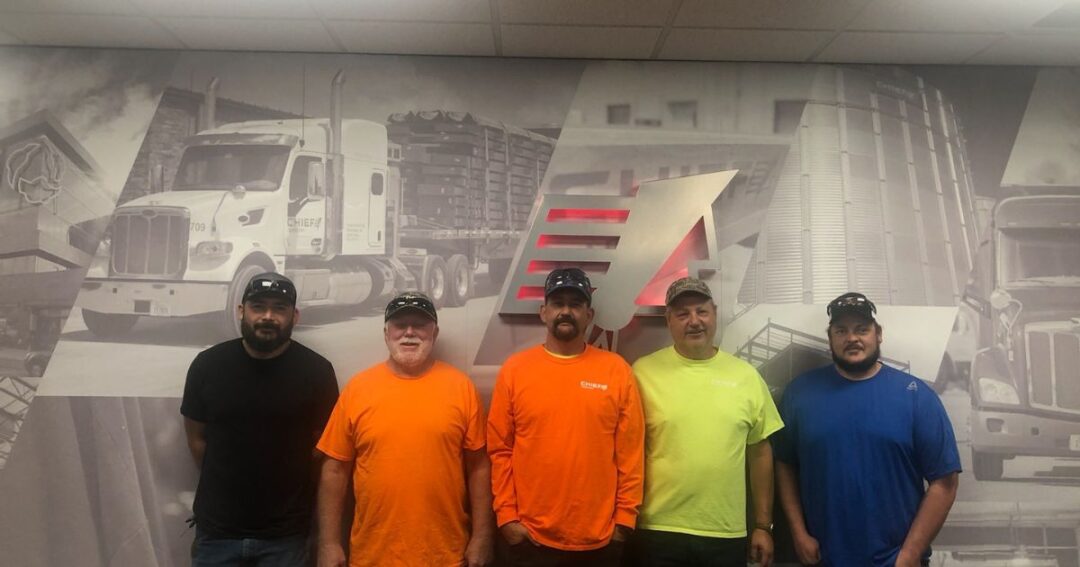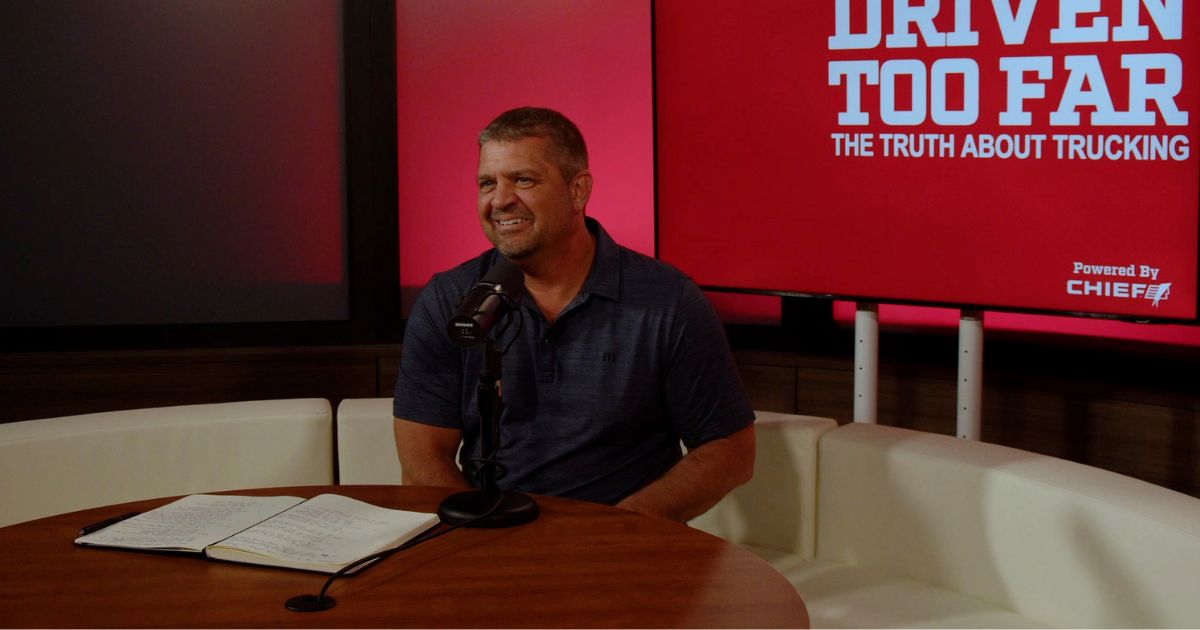Truck Driver Onboarding: Finding Your Ideal Trucking Job
So, you’ve landed a new job. Allow us to be the very first to congratulate you! Now comes the exciting and sometimes nerve-wracking part: orientation and truck driver onboarding.
In this Driven Too Far post, we’ll give you an insider’s look at the new driver orientation process, share some tips for a smooth transition, and help you set realistic expectations for those first few days with your new carrier.
Your First Steps with a New Truck Carrier
So, what is orientation all about? This moment is where you’ll get acquainted with your new carrier, learn their policies and procedures, and hopefully, get behind the wheel of your new truck.
What exactly should you expect during orientation? And what are some red flags to watch out for?
Onboarding: Setting the Stage for a Successful Start
The best carriers understand recruitment is the first step in building a strong relationship with their drivers. That’s why they often begin the onboarding process even before you arrive for orientation.
This may include sending you essential paperwork, such as tax forms (W-4) and employment eligibility verification forms (I-9), to complete in advance. Some carriers may even assist with benefits enrollment or provide you with access to training materials online.
Pre-onboarding streamlines the orientation process, allowing you to spend less time filling out forms and more time getting hands-on training and familiarizing yourself with the company’s operations.

The Journey to Orientation
Your journey to orientation can set the tone for your entire experience with the new carrier. A reputable company will make travel arrangements for you, whether it’s a car service, a plane ticket, or another convenient option. They’ll cover the costs and ensure you have a comfortable and stress-free trip.
Beware of carriers that still rely on bus tickets or that make you pay for your transportation without a refund. Long, uncomfortable journeys can leave you exhausted and less mentally prepared for your orientation.
If a company isn’t willing to invest in your comfort and convenience from the get-go, it could be a red flag about their overall commitment to their drivers.
First Impressions Matter: What to Expect on Day One of Orientation
The first day of orientation is your new carrier’s chance to make a positive impression. You should be greeted warmly and made to feel welcome. Ideally, the company will have a well-organized schedule for the day, minimizing paperwork and maximizing opportunities for you to meet your team, learn about the company culture, and get excited about your new truck driver job.
Remember, orientation is a two-way street. It’s your chance to assess the company just as much as it’s their chance to assess you.
If you encounter any red flags or have concerns, don’t hesitate to speak up. A reputable carrier will be open to feedback and willing to address any issues that arise.

Beyond Day One: Navigating the Rest of Orientation
While the first day sets the tone, the rest of your orientation is equally important. It’s during this time that you’ll delve deeper into the company’s operations, meet key personnel, and gain the knowledge and skills you need to thrive in your new trucking job.
What to Expect
Orientation programs vary from carrier to carrier, but most include a combination of classroom instruction, hands-on training, and assessments. You can typically expect to cover topics like:
- Company Policies and Procedures: Learn about the company’s rules and regulations, including safety protocols, driver expectations, and disciplinary procedures.
- Equipment and Technology: Familiarize yourself with the company’s trucks, trailers, and onboard technology, such as electronic logging devices (ELDs) and communication systems.
- Safety Training: Receive comprehensive training on safe driving practices, hazard recognition, and accident prevention.
- Load Securement (if applicable): If you’re hauling specialized freight, you may receive additional training on proper load securement techniques.
- Performance Evaluations: Some carriers may conduct on-the-road assessments to evaluate your driving skills and ensure you meet their standards.

Red Flags to Watch For:
- Disorganization and Delays: If the orientation schedule is constantly changing or there are long periods of downtime, it could be a sign of poor planning and a lack of respect for your time.
- Lack of Transparency: Pay close attention to the information presented during orientation. If it contradicts what the recruiter told you or raises concerns, don’t be afraid to ask questions and seek clarification.
- Negative Attitudes: Observe the interactions between staff and other drivers. If you witness unprofessional behavior, negativity, or a lack of enthusiasm, it could be a red flag about the company culture.
- Inadequate Training: Comprehensive training is crucial for driver success and safety. If the training feels rushed, incomplete, or outdated, it could indicate a lack of commitment to driver development.
Holding the Carrier Accountable: Your Right to Ask Questions
Remember, you’re not just a passive participant in the orientation process. You can ask questions, seek clarification, and hold the carrier accountable for the promises made during recruitment.
If you notice discrepancies between what the recruiter told you and what you’re experiencing in orientation, speak up.
Feel free to address your concerns with the recruiter, a manager, or even the owner of the company.

Making the Right Choice: When to Walk Away
If, after going through orientation, you realize the company or the job isn’t the right fit for you, don’t be afraid to walk away.
It’s better to cut your losses early than to stay in a situation that makes you unhappy or compromises your safety.
A reputable carrier will understand and respect your decision.
Your Path To a Dream Trucking Job
Navigating the new driver orientation process can be both exciting and challenging. By knowing what to expect, recognizing red flags, and holding the carrier accountable, you can ensure a smooth transition into your new trucking job.
Remember, your success as a truck driver depends on finding the right company culture, support system, and opportunities for growth.
Don’t settle for anything less than a carrier that values your skills, respects your time, and prioritizes your safety.
If you’re ready to join a carrier that truly values its drivers, check out the truck driver job opportunities at Chief Carriers. We’re committed to providing a supportive, transparent, and rewarding work environment for all our drivers.

The Perfect Trucking Job Awaits for You
Finding a trucking job can be a daunting task, but by arming yourself with the right information and approach, you can navigate the process with confidence.
Be wary of flashy marketing tactics, conduct thorough research, ask the right questions, and trust your gut.
By doing your due diligence, you’ll increase your chances of finding a carrier that values its drivers, prioritizes safety, and offers a rewarding career path.
At Chief Carriers, we pride ourselves on transparency, honesty, and a commitment to our drivers’ success. Visit our website to learn more about our company culture, safety record, and current truck driver job openings.

